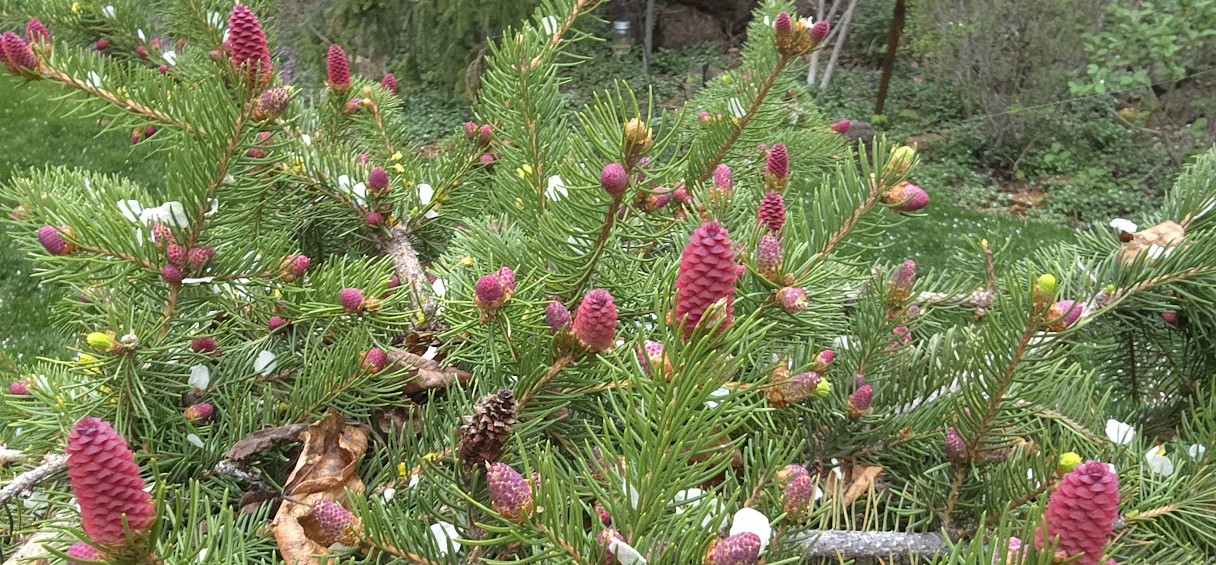As I sat outside being pelted with white petals and yellow petal clusters, I realized that from nature to day-to-day life, the unexpected commands our attention.
My backyard looks like a lush little oasis bordered by lava rock that’s as tall as my house and a couple of juniper trees that are hundreds of years old. I’ve put in flowering pear trees, maples, an aspen to commemorate my years in the High Sierra, and plenty of flowering perennials and groundcover. But the surprisingly fuchsia pinecones that appear on the weeping evergreen are what make my heart sing each spring.
Writing works the same way. Create an unexpected turn of phrase rather than settling for a tired cliché, and you’ll capture the reader’s attention. I love the unexpected analogy one of my clients recently came up with. She wrote: “She shot him a heated look that could have burned the fog away like the afternoon sun.”
When I googled “unexpected analogy,” I got this example from John Green’s bestseller The Fault in Our Stars: “The sun was a toddler insistently refusing to go to bed: It was past eight thirty and still light.” I love that!
Unexpected characters will also grab a reader’s attention. As I’ve noted before, I think that one of the secrets of my client Barbara Hinske’s success with her Rosemont series was making the character who defrauded an entire town a dog lover who had built and operated an animal shelter.
“One of the things I love about the painting process is the excitement I feel when the unexpected develops,” Bend artist Mollie Jurgenson was recently quoted as saying. The writing process is no different.
Similarly, plot twists keep things interesting—for the author as much as the reader—when they show up despite the best-laid plans and outlines. As they say, life happens while we’re making other plans. So do novels.




















0 Comments